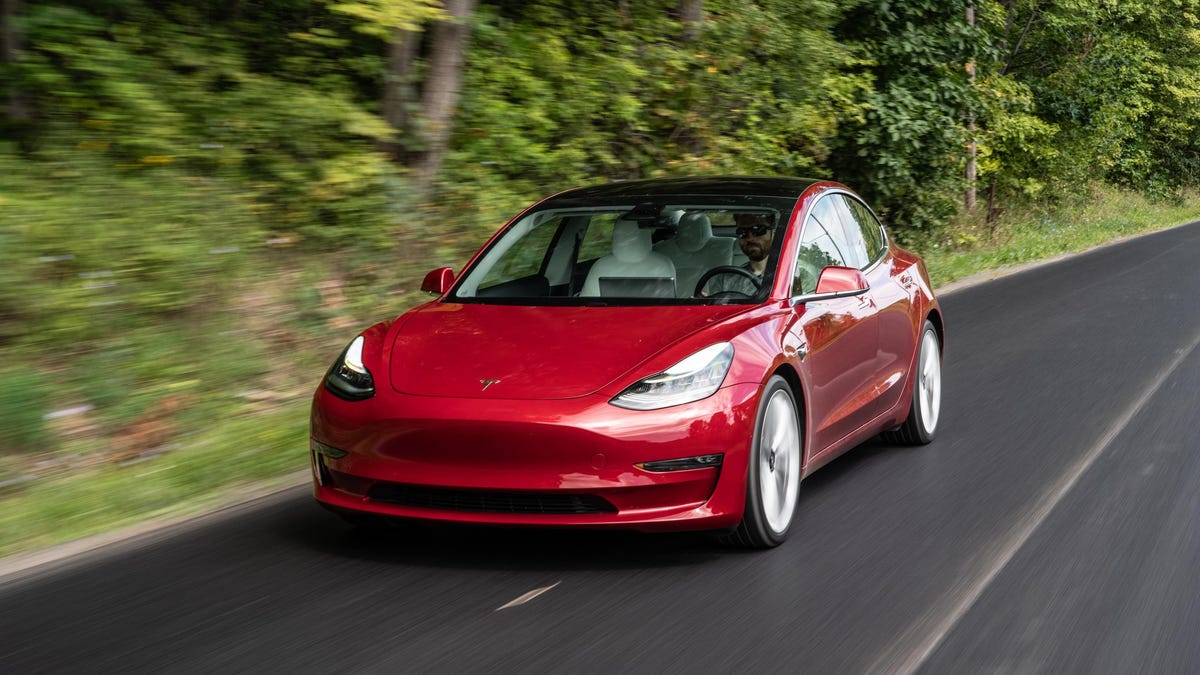No, Tesla's Autopilot isn’t dangerous, you just have to use it correctly
Commentary: A lot of folks who don’t own Teslas say Autopilot is unsafe. But I do own one, and used correctly, it’s perfectly fine.

Hi, internet. Usually I don't do things like this, but today, I'm making an exception.
Recently, there has been a kerfuffle online about how the Tesla Model 3 is "dangerous." It changes lanes unsafely! It cuts off drivers like a rich guy in a BMW running late for a pitch meeting with a very important client!
I'm here to tell you, dear reader, that these claims are ridiculously overwrought. And this week, after fielding multiple emails and texts from family begging me to reconsider my Model 3 purchase, I've had it.
My husband and I are expecting our first child together this summer, and that means our friends and family have opinions about the kid's safety. One of them actually said, "turn that death trap in immediately and get a Volvo, or something else SAFE."
Here's my problem: Many (all?) of these articles appear to be written by people who don't have a Model 3 as a daily driver. I do. So I'm going to break it down here and tell you what it's like to actually drive one, and why I'm not getting rid of it anytime soon.
I bought my car almost exactly a year ago, and when I first took possession of it, I was terrified of Enhanced Autopilot. Anecdotally, many of my friends who purchase their first Tesla also have this experience. It's surreal and kind of scary to have this relatively high level of automation at your fingertips, particularly when you're navigating the concrete jungles of Los Angeles. You've heard about our traffic, I'm sure.
It took me a few months to find a happy place with Autopilot, where I didn't feel annoyed by it and where I was confident working alongside it in my regular driving conditions: Stick to a single lane, try to avoid cruising in lanes with exits (earlier versions of Autopilot struggled a bit with them), and take full control of the car when I needed to exit the freeway quickly or change course for a junction.
I'm not giving up my Model 3 anytime soon.
Then, Navigate on Autopilot came around, and I was excited to test it out. This is where everyone says the car is "dangerous" -- automatic lane-change issues cutting off drivers in particular. I've been trying NoA since I got the software update, and I can confirm it's not my favorite way to drive the Model 3; but, it's not because it feels too aggressive. It doesn't feel aggressive enough for Los Angeles.
It's not nearly as smooth as I'd prefer, and I generally leave it off. As always, Autopilot and its features are still in beta, and NoA in particular doesn't quite feel ready for prime time, at least for my personal driving conditions. If I know I won't hit traffic and have a clear ride ahead, NoA is a great feature. But it doesn't start merging to change freeways until a mile beforehand -- a ludicrously short distance in LA, where getting over from the HOV lane might take two to three miles in heavy traffic (especially when drivers don't want to let you get over in front of them, which we've all experienced).
Crowded freeways and a computer trying to figure out how much space it has to merge? It's clunky. And it sure can be dangerous -- just like a new driver might be dangerous, or an older driver who can't stop pumping the brakes when using an overabundance of caution. But the difference between those examples and Tesla's Navigate on Autopilot is that only one of them allows for an experienced driver to take over immediately, change their settings to help adjust their own preferences, and generally have options to be a safer driver while driving.
The TL;DR:
- Autopilot, particularly Navigate on Autopilot, is in beta, and people should not treat it or expect it as anything more than a helpful hands-on assistant if they own a Tesla.
- Human drivers who don't pay attention or drive like assholes (speeding up when my turn signal goes on to try to keep me from merging, for example) are also a major factor in why Autopilot isn't as safe as it could be.
- People without experience driving a Tesla regularly tend to write these articles, which inevitably go out to more non-Tesla drivers than owners, often making them unfairly fearful of a pretty impressive bit of technology.
- Specific state laws (e.g. right-side passing, etc.) will be incredibly difficult for Tesla to address quickly and are definitely something to keep an eye on, but it's also on the driver of the car to be aware of that and adjust their Autopilot habits accordingly.
Oh, and one last thing: I'm not getting rid of my car. Sorry not sorry, fam.

